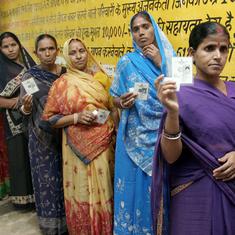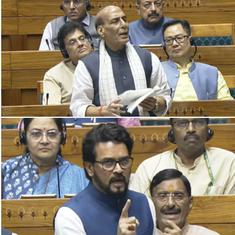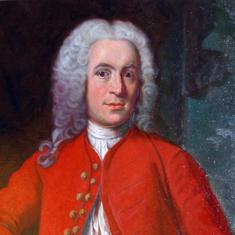When the British-era Government of Bengal decided to set up the first medical college in Asia in Calcutta in the 1830s, there was intense debate among the Indian educated class about what the curriculum to be taught to the future students should be. Should it be the Indian systems of medicine then current – Ayurveda or Unani – or should the students be taught the Western medical education system? The authority of Pandit Ishwarchandra Vidyasagar – a scholar of Ayurveda if not an actual practitioner – was influential in deciding that Western medicine was the way forward and the teaching of Western medicine triumphed. All the subsequent medical colleges in the Madras and Bombay Presidencies followed suit.
Ayurveda, though, and its teaching never went away. Almost 200 years later there remains considerable interest in Ayurveda and its philosophy of medicine, although no MBBS curriculum medical school teaches it in detail. One reason for this is the lack of a clear and authoritative version of the Charaka Samhita, the foundational textbook of Ayurveda. Fortunately, we now possess the life’s labour of Dr Priyavrat Sharma, former Director of the Postgraduate Institute of Indian Medicine, BHU who has brought out a revised, critical, annotated edition of the Sanskrit text with a fluent English translation, several decades in preparation, now readily available in online stores, and as a free download on several sites.
A philosophy of health
While it is impossible to discuss or even summarise the diagnostic paradigms and extensive and unique pharmacopoeia of Ayurveda in a single article, what is certainly interesting and accessible to all students of medicine – indeed, even to laypersons – is a summary of the philosophy of Ayurveda, which remains cogent and relevant to our life today. Why is this? It is probably because Ayurveda, unlike Western medicine, deals with the practical issue of how to lead a healthy life – something (curiously, and studiously) avoided by that system of medicine.
Western critics of Charaka (and other traditional systems of medicine) typically focus on the philosophical underpinnings (a knowledge of the Sankhya school is assumed), the theory of the triple dosa, the creation of combinations of arbitrary physiological and psychological archetypes, the anatomical speculations, the covert (and overt) patriarchal assumptions and so forth. This, however, is both unduly reductionist and, moreover, misses the very real point that a healthy life is, in the vast majority of situations, not a matter of therapeutic intervention.
At the outset (vol 1, pages 6-7) Charaka proclaims: “Ayurveda is that which deals with the good, bad, happy and unhappy life, its promoters and non-promoters, measure and nature…mind, self and body – these three make a tripod on which the living world stands.” The foundation for a healthy life, we are taught, is not asceticism and avoidance, but, rather, enjoyment and appreciation of all of the good things of life – appropriately, and in moderation.
Dietary and behavioural codes
The first principle in the maintenance of a healthy life is diet – something that is taught in Western medical education in the 2nd or 3rd year, which typically introduces the concept of a normal diet through the study of deficiency diseases. Charaka, on the other hand, states (vol 1 page 33) that “food, taken in proper quantity, provides strength, complexion and a happy life to a person without disturbing normalcy…a person should not eat heavy preparations of flour, rice…dried vegetables, milk products, pork, beef, fish” and so on (there are long lists of foods throughout the treatise, and when and how to cook and eat them, which will be discussed here in due course).
One is advised that the healthy life is moderate, virtuous and temperate, that “urges of greed, grief, fear, anger, vanity…envy, desire of taking another’s property…the impending urge of speech which is harsh, betraying, lies…bodily action that causes pain to others, – adultery, theft and violence” are to be avoided (vol 1 page 50). This is very much the opposite of Western medicine, where a physician is expected not to be judgmental, in particular regarding moral failings, and especially not to recommend a particular morality.
One of the particularly interesting features of the Charaka Samhita is its specific emphasis of the relationship between health and seasons. Thus the nature of diet is attuned to the six classical seasons of the subcontinent, working on the subcontinental calendars. We are no longer, perhaps familiar with (or maybe even notice) the seasons “from sisira to grishma…known as the adana (receiving) when the sun takes a northward course” compared to “varsa to hemanta…the visarga (releasing, with the sun following the southward course” (vol 1 page 42).
Obviously, “during hemanta one should use the unctuous, sour and salted juice of the meat of dominantly fatty and aquatic and marshy animals, and also meat of burrow dwelling animals. After this, the person should drink wine, vinegar and honey. One does not lose lifespan if he takes regularly milk products, cane sugar, fats, oil, new rice and hot water during hemanta” (Vol 1 pp 44). During spring “one should eat the meat of the sarabha (wapiti), sasa (hare), ena (antelope), lava (common quail) and kapinjala (grey partridge), and drink harmless vinegars and wines”. During the rainy season “when the day is filled with wind and rain, and is much cooler, diet having a predominance of sour, salted and fatty articles should be taken…the person should eat old barley, wheat and rice, along with wild meats and prepared soups. For drink, wine, and other types of fermented liquor, mixed with honey and in little quantity…rain water, or water from a well or tank, boiled and cooled should be used” (vol 1 page 46).
Charaka is both secular and eclectic. By way of example, and to the extent that he records the practices of the society of his day, he encourages smoking, as a way of ingestion of medication (not recreational, and not tobacco – that was a New World import by 16th century Europeans), a concoction of 32 herbs, bark and fruit is to be ground into a paste and smoked “as a daily routine for happiness…eight times are prescribed for smoking as a daily routine…a cautious person should smoke after bath, meals, vomiting…tooth brushing…and sleep (vol 1 pages 35). A moderate in most things, he warns that excessive and untimely smoking “causes deafness, blindness or dumbness”. One should not smoke when “afflicted with anxiety, when pregnant” or suffering “fainting giddiness, thirst” among a wide number of specific contraindications.
Of meat and drink
One of the most interesting sections of the Samhita deals with the need for a nondenominational deist faith for a healthy life. Charaka is quite clear that the good life is a consummation of three desires, these being “a desire for life, a desire for wealth and a desire for the other world” (vol 1 page 69). For him, a conventionally moral life – “study, performance of rites, marriage, reproduction, entertaining guests, supporting servants, charity, refraining from envy, benevolent acts” and so forth are how one attains “fame here and heaven thereafter” (vol 1 page 74). Indeed, he is careful to use the word “swargam” in this context.
Not only is Charaka free from sectarianism in philosophy, but he is also remarkably broad-ranging in his prescriptions for diet. Thus, in a remarkable section of the Sutrasthana (vol 1 page 198-201), we learn about the advantages of eating the meat of a variety of animals and birds including, unusually, peacock (“excellently beneficial for vision, hearing, intellect”), swan (“promotes voice, complexion and strength”), grey partridge (“beneficial for the disorders of pitta, kapha, rakta and those having mildness of vata), parrot (“useful in phthisis, cough and wasting}, and even sparrow (“promotes strength and semen”).
Charaka also offers reasons to eat conventional meat from the goat, and sheep, hare and tortoise, and, of course, pork (“bulk-promoting, aphrodisiac, alleviates fatigue and vata, promotes strength”) and beef (“useful in absolute vata, chronic rhinitis, intermittent fevers, dry cough, fatigue, excessive agni and wasting of muscles”). Exotica such as buffalo-meat (“aphrodisiac…produces firmness, bulk, courage and sleep) and the meat of rhinoceros (“bulk-promoting, beneficial for complexion, alleviates fatigue and vata”), and eggs of swans, chakora, hens, peacocks, and sparrows (“useful in diminished semen, cough, heart disease and injuries”) are not omitted from the comprehensive roster of useful food.
Regarding alcohol, Charaka exhibits a rational sensibility. Indeed, one can infer from the fact that he devotes a very large section (vol 2, pages 390-408) to the correct method of drinking alcohol and the management of alcoholism, that the practice of drinking fermented liquor must have been widespread in India 2000 years ago – as indeed it is today. “One should always drink the best wine, along with various suitable fruit, some green vegetables, salted and seasonal food items, roasted meat of terrestrial, aquatic and flying animals and birds...Wine is like nectar for that who drinks according to prescribed method, in proper quantity, in proper time, with wholesome food...on the contrary it acts like poison for those who indulge in drinking unwholesome wine...observing rough regimens.”
Not today’s Ayurveda
In sum, Charaka’s stupendous compilation holds up a mirror to us of Indian society of two millennia ago – or rather, of its middle- and upper-middle class components. It is a society that is refined and fastidious in personal hygiene, worldly but refreshingly tolerant, eclectic, rational and very definitely non-fundamentalist. The very large segment of diagnostic and therapeutic Ayurveda (which covers the majority of his writing) is an enormous body of work, meriting a lifetime of study. What one can summarise, however, is that every medical therapeutic intervention proposed in the Samhita – either to be taken by mouth, or applied as an unguent or fomentation or emetic or enema – was not only freshly prepared from selected ingredients but, also, most important, carefully and specifically individualised with regard to season, constitution, previous diet and personality. One can at least confidently predict that the modern notion of advertised “Ayurveda Treatment” as a market-driven sale of pre-packaged herb and fruit extracts, mixed into toothpastes, shampoos and assorted golis, allied with sharp marketing practices, would have filled him with horror – as indeed it does every sincere medical practitioner, be they Ayurvedic, Unani or Western.
As a modern Western-trained physician, I can only end my homage to the master clinician by remembering the performance of a procedure a few days past – to allow the passage of urine in a distressed patient via a catheter using the same technique and wise maxim that Charaka describes. “The catheter should be made of gold or silver…with a hole fitting a mustard seed…twelve fingers in length” before which “a probe smeared in ghee is inserted to see if the passage is unobstructed” (Vol 2 pages 651). We have replaced the ghee with modern lubricant jelly, and precious metal with cheap latex, but I can report today that the patient achieved the same relief that his ancestor did more than 2000 years ago.

Caraka Samhita, Sanskrit text with an English translation by PV Sharma, volumes 1-4, revised and enlarged edition, Chaukhamba Orientalia.










